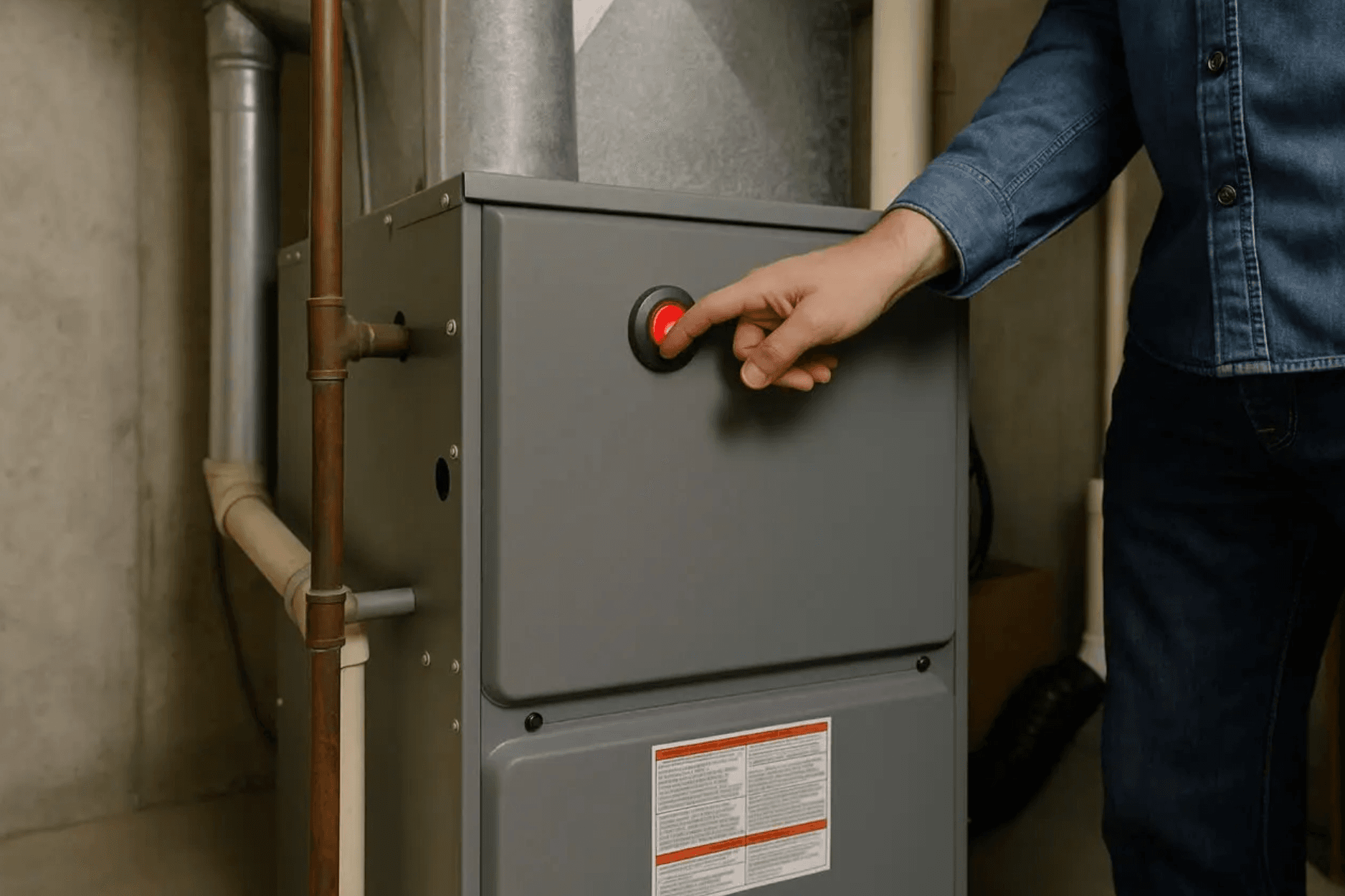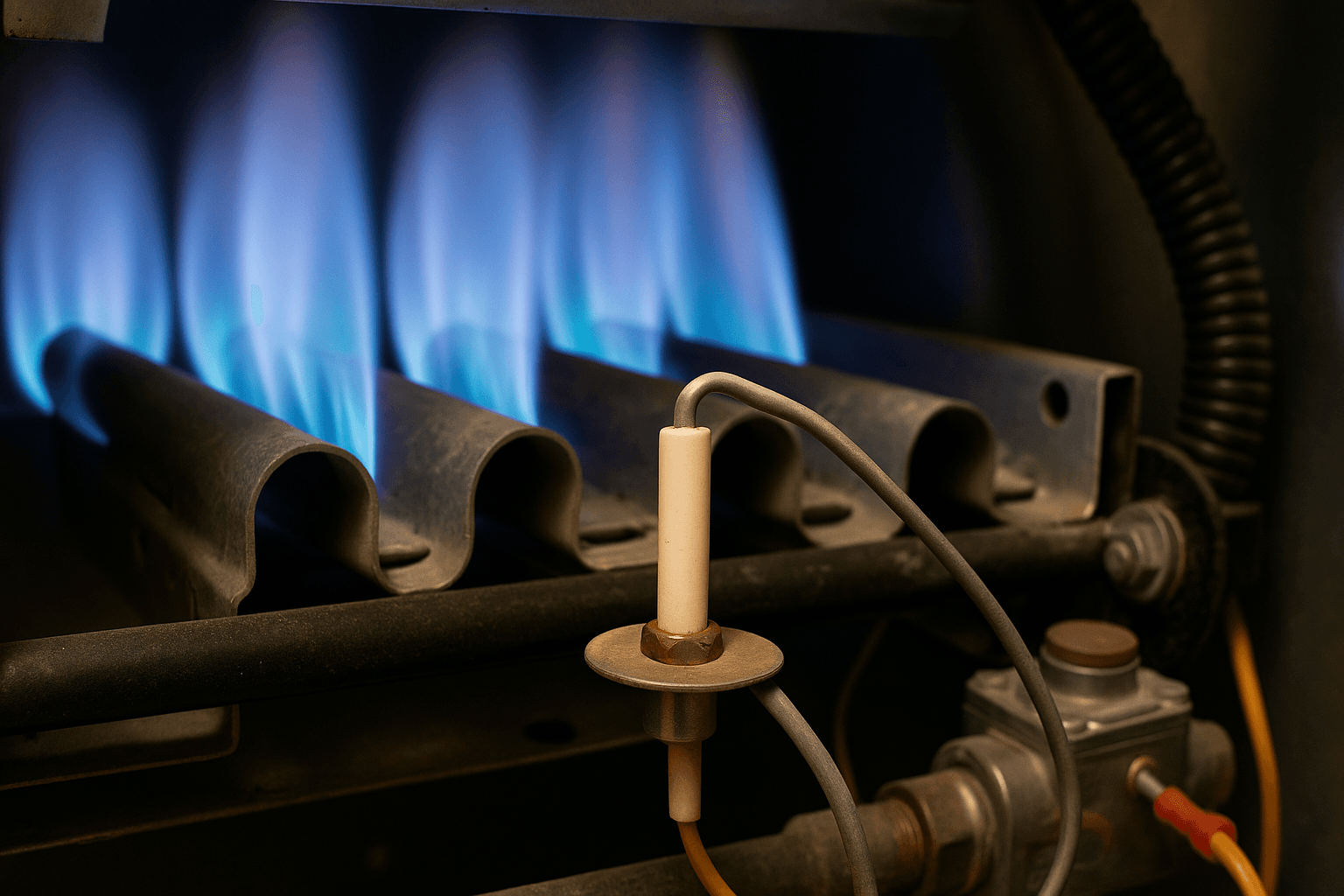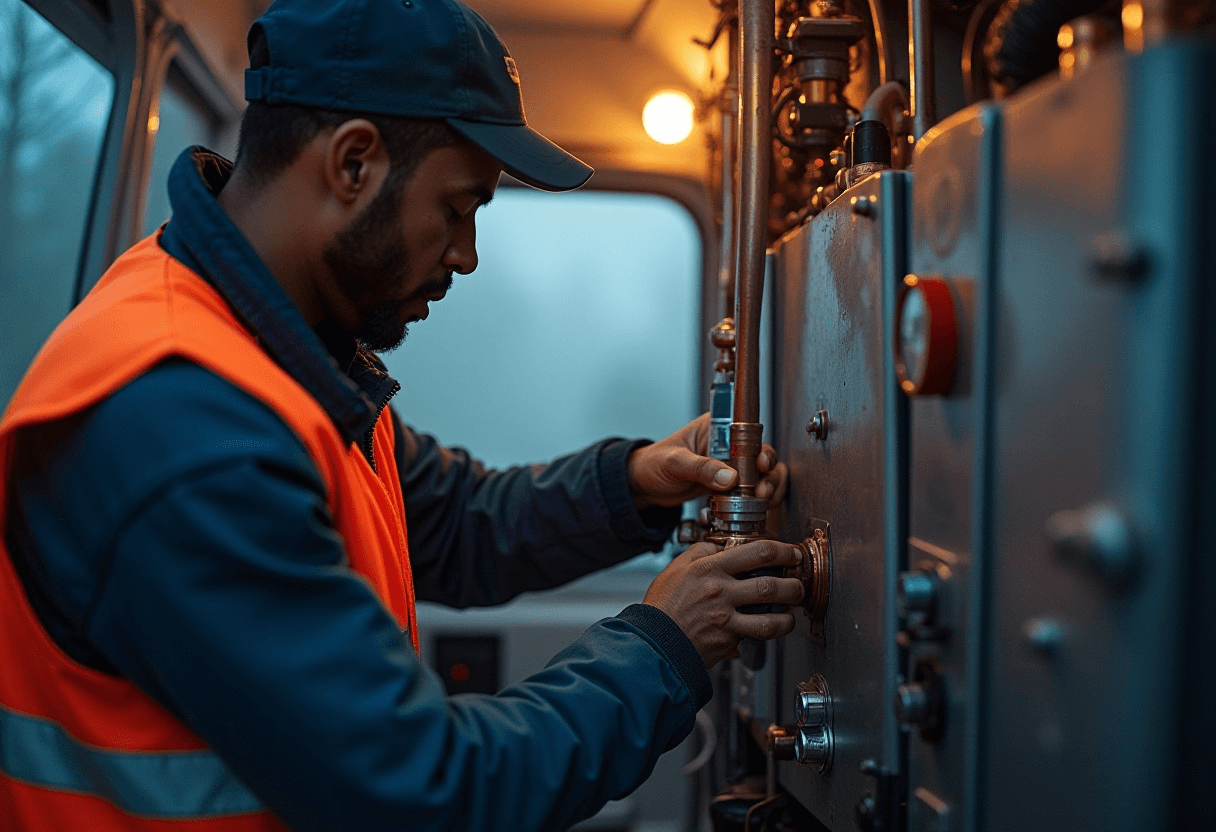Repair help
8 Signs of a Bad Flame Sensor Symptoms in Your Furnace
AZparts Team
Updated on November 20, 2025
6 min read
Your furnace plays a vital role in keeping your home warm, especially during colder months. However, if it starts behaving unpredictably, turning off too soon, blowing cool air, or refusing to ignite, a bad flame sensor could be the cause. AZParts will help you understand common bad flame sensor symptoms helps you identify the problem early and take action before it leads to costly repairs or unsafe operation.

1. 8 Signs of a Malfunctioning Flame Sensor in Your Furnace
A properly working flame sensor is essential for maintaining safe and efficient furnace performance. When the sensor becomes dirty, damaged, or worn out, it may stop detecting the flame correctly. This malfunction can lead to furnace shutoffs, gas flow interruptions, and even increased utility costs. Below are eight common bad flame sensor symptoms that your furnace flame sensor might be failing.
1.1. Flue Line Corrosion
If you notice rust or corrosion forming around the flue line, this may be a warning sign. A failing flame sensor can allow the furnace to cycle improperly, causing excess moisture to collect and corrode nearby components. Over time, this moisture can accelerate flue pipe deterioration and impact overall system safety.
A faulty flame sensor can cause excess moisture to build up and corrode nearby components (Source: AZParts)
1.2. High Energy Bills
A faulty flame sensor may cause your furnace to restart frequently or operate less efficiently. As the system struggles to maintain consistent heating, it consumes more energy than necessary. This inefficiency often leads to unexpectedly high utility bills despite normal usage patterns.
1.3. Yellow Flames
Your furnace should produce a steady blue flame. If the flame turns yellow, the sensor might not be working correctly, and combustion may be incomplete. This could result in the release of carbon monoxide and poses a serious health and safety risk.
1.4. Furnace Short Cycling
When the flame sensor fails to confirm the presence of a flame, the furnace may shut off prematurely. This process, called short cycling, can repeat over and over, putting stress on your system. Frequent cycling not only causes wear and tear but also prevents your home from being properly heated.
Short cycling repeats over and over, can put stress on your system (Source: AZParts)
1.5. Dirt on the Sensor
A dirty flame sensor cannot detect the burner flame accurately. Even a thin coating of dust or soot can block the electrical current needed for flame confirmation. If left uncleaned, this issue may cause the furnace to shut down shortly after ignition.
1.6. Visible Damage
Any physical signs of wear, such as cracks or burn marks on the flame sensor, indicate the part is compromised. Damaged sensors lose sensitivity and cannot detect the flame consistently. This unreliability disrupts normal furnace function and creates potential safety concerns.
1.7. Unusual Odor
If your furnace emits a strong or unusual smell during operation, a malfunctioning sensor could be to blame. Incomplete combustion caused by a faulty sensor may produce odors from unburned fuel. These smells should be taken seriously, as they could point to a gas leak or poor air quality.
1.8. Old Age
Flame sensors typically have a limited lifespan and can degrade after several years of use. An older sensor may respond more slowly or fail to detect the flame altogether. Replacing an aging sensor can restore furnace performance and prevent unexpected breakdowns during the heating season.
Flame sensors can degrade after several years of use (Source: AZParts)
2. Best Way to Safely Clean Your Flame Sensor
Cleaning a furnace flame sensor is essential to ensure your heating system operates safely and efficiently. Over time, the sensor can become coated with soot or residue, which interferes with its ability to detect the flame.
To clean the flame sensor safely, start by gathering a few tools such as a soft dry cloth, fine-grit sandpaper, a screwdriver, and protective gloves.
- First, turn off the power supply to the furnace and allow it to cool down completely. Then remove the front access panel using a screwdriver.
- Locate the flame sensor near the burner assembly. Use the screwdriver to carefully detach the sensor.
- Gently clean the metal rod with fine-grit sandpaper to remove built-up residue. Be careful not to scratch or damage the surface of the sensor.
Cleaning a furnace flame sensor is essential to ensure your heating system operates efficiently (Source: AZParts)
After cleaning, reattach the sensor in its original position and secure the access panel. Turn the power back on and test the furnace to ensure it runs smoothly. If problems persist, replacing the flame sensor may be necessary.
If your furnace flame sensor continues to malfunction after cleaning or shows signs of wear, replacement may be the best option. At AZParts, we carry reliable flame sensor replacements that match a wide range of furnace models, helping restore safe and consistent operation.
3. How to Find the Location of a Flame Sensor on Your Furnace?
Before you clean or replace a flame sensor, you need to know exactly where it is located in your furnace. Identifying its position helps you work safely and prevents accidental damage to other components. The flame sensor is always placed near the burner because it must detect the presence of a flame during ignition. Before cleaning or replacing the flame sensor, you need to know its location in your furnace. The sensor is always near the burner to detect the flame during ignition.
Turn off the furnace power for safety, remove the front panel, and locate the burner assembly. The flame sensor is a small metal rod, usually bent at one end, held by a screw, and connected to the control board by a single wire. Its exact position varies by model but is always near the burner jets.
If your furnace won’t start properly or keeps shutting off, it may be a bad flame sensor. Common bad flame sensor symptoms include sudden shutdowns, weak flames, or frequent cycling. Knowing how to tell if a flame sensor is bad helps you decide whether to clean or replace it. Check your furnace manual for exact placement. Correctly identifying the flame sensor ensures safe handling and long-term reliability.

The flame sensor is a small metal rod, usually bent at one end, and secured by a screw (Source: AZParts)
Knowing how to spot the symptoms of a faulty flame sensor helps you maintain a safe and efficient furnace. If you notice any of these issues, don’t wait until your heating system fails completely. Explore high-quality replacement furnace part at AZParts and restore reliable performance to your furnace today.
4. FAQ about Bad Flame Sensor Symptoms
4.1. Will a furnace ignite with a bad flame sensor?
No. A bad flame sensor prevents the furnace from igniting because it can’t detect the flame, causing the system to shut off for safety.
4.2. What does a flame sensor do?
A flame sensor detects if the burner flame is present. If not, it shuts off the gas supply to prevent leaks — one of the main bad flame sensor symptoms is the furnace turning off right after ignition.
4.3. Can I test a flame sensor with a multimeter?
Yes. You can check it with a multimeter by measuring microamps. Low or no reading is how to tell if a flame sensor is bad.
4.4. Can I run my furnace without a flame sensor?
No. Running without a flame sensor is unsafe and can cause gas leaks or fires. Replace it if it’s faulty.
Contact Information:
8 The Green, Ste A, Dover, Delaware 19901-3618, United States
Read more:
Furnace
Further Reading
Further Reading





